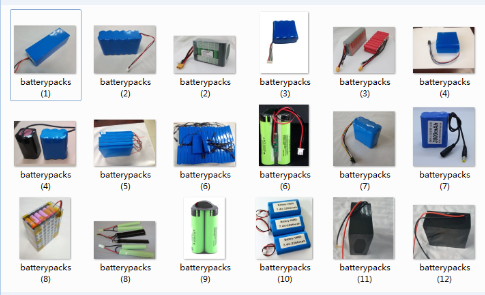3.6V-3.7V Li-Ion/Polymer Battery Pack
46V-54V Li-Ion/Polymer Battery Pack
Li Ion Battery Pack,Lithium Ion Battery,18650 Li Ion Battery Pack,Panasonic Li Ion Battery Pack Asarke Industry Co., Limited , https://www.asarke-industry.com A team of researchers from the School of Physics and Mechatronics, Xiamen University, has covered the ultra-thin aluminum film on the surface of high-aluminum nitride nitride deep-ultraviolet light-emitting diodes (LEDs) to solve the problem of restricting the light extraction efficiency of this light-emitting device. "The key challenge is to open up new methods and ideas for the future industrialization of such devices in medical, environmental, and military applications."
A team of researchers from the School of Physics and Mechatronics, Xiamen University, has covered the ultra-thin aluminum film on the surface of high-aluminum nitride nitride deep-ultraviolet light-emitting diodes (LEDs) to solve the problem of restricting the light extraction efficiency of this light-emitting device. "The key challenge is to open up new methods and ideas for the future industrialization of such devices in medical, environmental, and military applications."
Xiamen University said on the 12th that the results of this research have recently been published in the “Science Reportâ€, an online open publication covering all areas of natural sciences under the “Nature†Publishing Group.
The so-called deep ultraviolet light refers to ultraviolet light having a wavelength shorter than 280 nm. This light source can play a unique role in water and air purification, disease treatment, information technology and other fields. However, for a long time, due to the intrinsic characteristics of nitrides of high-aluminum components and the preparation process, the efficiency of extracting deep ultraviolet rays from light-emitting diodes is very low, which means that there are few parts where electricity is converted into usable light, resulting in “light. The loss of energy greatly limits the wider application of deep UV LEDs.
The task force under Prof. Kang Junyong of the School of Physics and Electromechanical Engineering of Xiamen University has set its sights on “locking in†this study. After several years of research, Huang Kai, an associate professor of the research group, and Gao Na, a member of the doctoral student, borrowed an ultra-thin aluminum film to solve this problem: When the research team plated a layer of ultra-thin light on the surface of a deep ultraviolet light emitting diode, it was only 5 nanometers thin. In the aluminum film, it was surprisingly found that this layer of aluminum film not only did not reflect the light emitted by the device much like a traditional mirror, but instead cleverly collected the light emitted from the device sideways through the aluminum film layer. Shooting from the front achieves improved light extraction efficiency.
Huang Kai explained that “this is because when the aluminum film is made very thin, its nano-effect makes it different from traditional mirrors that reflect light back, but concentrates on absorption, achieving light collection and frontal emission.â€
Tests have shown that the “contribution†of this aluminum “coat†to the UV extraction efficiency of light emitting diodes will vary with wavelength. In general, the shorter the wavelength, the higher the efficiency. The data show that the same is coated with this aluminum film, UV light-emitting diodes with a wavelength of about 310 nm, the light extraction efficiency can be increased by about 20%; wavelength of about 290 nm UV light-emitting diodes, light extraction efficiency can be increased by about 50%; and for Deep-ultraviolet light-emitting diodes with a wavelength of about 280 nm can increase light extraction efficiency by 130%.
This result has inspired the members of the task force. At present, they are still improving their methods and are striving to further improve the light extraction efficiency of deep UV LEDs.
5V & 6V Regulated Li-Ion Pack
7.2V-7.4V Li-Ion/Polymer Battery Pack
10.8V-11.1V Li-Ion/Polymer Battery Pack
12V - 13.2V Regulated Li-ion/Polymer Battery Pack
14.4V-14.8V Li-Ion/Polymer Battery Pack
18V-18.5V Li-Ion/Polymer Battery Pack
21.6V-22.2V Li-Ion/Polymer Battery Pack
25.2V-25.9V Li-Ion/Polymer Battery Pack
28.8V-29.6V Li-Ion/Polymer Battery Pack
36V-37V Li-Ion/Polymer Battery Pack
